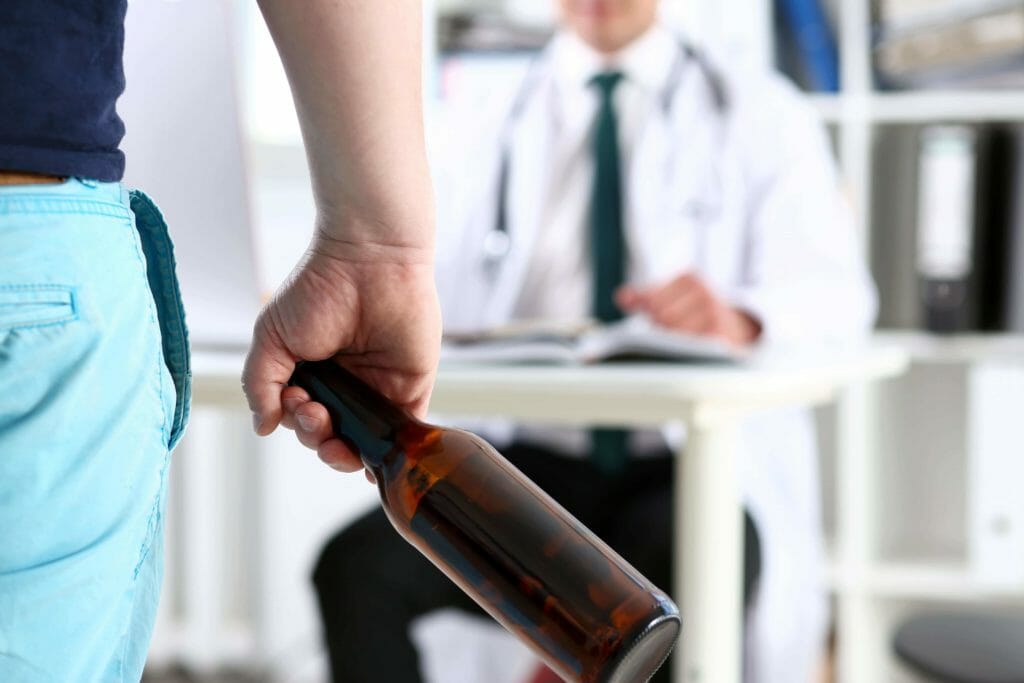Alcohol Withdrawal and Detox Timeline

About 95,000 Americans die each year from alcohol-related causes. Excessive or irresponsible use of alcohol is the third-highest preventable cause of death in the United States. Alcohol use threatens users’ physical and mental health, fractures families, has adverse legal and financial ramifications and triggers violence.
“Alcohol plays a role in at least half of all serious trauma injuries and deaths from burns, drownings, and homicides…[and is] involved in four out of 10 fatal falls and traffic crashes, as well as suicides,” according to WebMD sources.
You don’t have to be a chronic alcohol abuser to experience severe consequences; just one episode of binge drinking can result in your death or your responsibility for the death of another.
Although alcohol use disorder (AUD) is a chronic disease, it is highly treatable. Seeking treatment is the most valuable gift you can give yourself and your loved ones. Don’t let fear of detox or withdrawal symptoms stop you from reaching out for help. Medical and addiction specialists can help you detox safely, help you manage withdrawal symptoms, and guide you on the path to recovery.
What Causes Alcohol Withdrawal Symptoms?
Your body’s central nervous system (CNS) consists of your brain and spinal column and coordinates your actions, reflexes, and sensations. Alcohol depresses the CNS, slowing respiration, heart rate, blood pressure, motor function, and cognitive functions like understanding, reasoning, and speech. Excessive alcohol use may lower body temperature to a life-threatening level.
Besides interfering with normal brain function, alcohol signals the pleasure and reward center of the brain to release unnaturally high levels of “feel good” neurotransmitters like dopamine. While the body naturally releases dopamine and other chemicals in response to an enjoyable event, alcohol triggers the release of abnormally high levels, powerfully reinforcing the urge to repeat the behavior.
As you continue drinking large amounts of alcohol, the brain adapts and demands increasingly larger quantities of the addictive substance to deliver the desired effect. Once you start increasing the amount of alcohol you need to feel good, you have reached a state of tolerance. If you stop drinking once your brain has rewired to accommodate for the presence of alcohol, you will experience physical and mental withdrawal symptoms.
Symptoms of alcohol withdrawal usually begin six to forty-eight hours after your last drink. Withdrawal can cause severe side effects, and some can be life-threatening. Consult with your physician or an addiction professional before stopping alcohol use. If you are a heavy drinker, do not stop drinking “cold turkey.”
Alcohol Detox and Withdrawal Symptoms Timeline
The first step in alcohol recovery is detoxification (detox), to rid the body of waste products and toxins caused by excessive alcohol use. Detox reactions vary, depending on factors like your health and age, amount of alcohol typically consumed, how long you have been drinking, and whether you regularly mix alcohol with other addictive substances.
Once detox begins, alcohol withdrawal usually lasts about 5-14 days, depending on how long and how much you have been drinking. To ensure you are safe and as comfortable as possible throughout detox, experts recommend medical supervision throughout the process. Medical care during detox for heavy, long-term alcohol users is critical, as side effects can be life-threatening.
While the detox timeline may vary for each person, the following is typical.
6-8 hours after the last drink
Mood and behavioral changes may include depression, anxiety, and mood swings.
Physical symptoms may include shaky hands, insomnia, sweating, nausea, vomiting, headache, and loss of appetite.
12-48 hours after the last drink
Mood and behavioral changes may include confusion and irritability.
Physical symptoms may include elevated blood pressure and breathing, rapid heart rate, and fever.
In more severe cases of alcohol abuse, hallucinations or seizures may occur during this timeframe.
48-72 hours after the last drink
For some, symptoms may peak and decline during this timeframe. Withdrawal side effects may include minor shaking, headache, and stomachache.
However, about five percent of those going through alcohol detoxification experience delirium tremens (DTs), the most severe form of withdrawal. Symptoms may include vivid hallucinations and delusions, confusion, intense anxiety, seizures, shaking, dangerously fast heart rate, elevated blood pressure, and heavy sweating.
The DTs can be fatal. If you are a heavy alcohol user, you must be under constant medical supervision throughout the detoxification process.
Standard detox programs last one to two weeks to ensure toxins have entirely cleared your body before beginning your recovery program.
Medical professionals perform rapid detoxification using anesthesia and IV medications to clear the toxins quickly. While rapid detox may reduce uncomfortable withdrawal symptoms, it must be performed under constant medical supervision and is unsafe for those with certain health conditions.
5-14 days after the last drink
If you have been a heavy, long-term alcohol user, you may continue to have troubling withdrawal side effects. Post-acute withdrawal symptoms (PAWS) can last for several months and may include the following:
- Confusion
- Depression
- Anxiety
- Mood swings
- Lack of energy
- Sexual dysfunction
- Nightmares
- Sleep disorder
- Tremors
What You Can Do to Help Yourself During Recovery
You can take steps to help your brain and body recover more quickly.
- Stay well-hydrated with fresh water.
- Eat a diet rich in lean protein, fresh vegetables, and complex carbohydrates. Avoid processed foods and refined sugar.
- Put your recovery goals in writing and review your plan frequently.
- Adopt mind-body practices like yoga, meditation, mindfulness, massage therapy, and acupuncture. Exercise regularly.
- Avoid negative people, news, and entertainment. Read or listen to inspirational people, start a gratitude journal, and find ways to express your creative side.
The level of discomfort and duration of side effects from alcohol withdrawal differs for each person. The crucial point to understand is that treatment for alcohol abuse can literally save your life and possibly the lives of others. To achieve the quality of life you deserve, reach out for help. Contact your doctor or an addiction professional for guidance.
At Midwest Recovery Centers, our compassionate staff specializes in treating prescription or illegal drug dependence, alcohol dependence, co-occurring disorders, and other addictive behaviors while also providing education through a monthly support meeting for the families of those struggling.
Reviewed and Assessed by
Taylor Brown, B.A.Com., MAADC II
Tim Coleman, M. of Ed.



